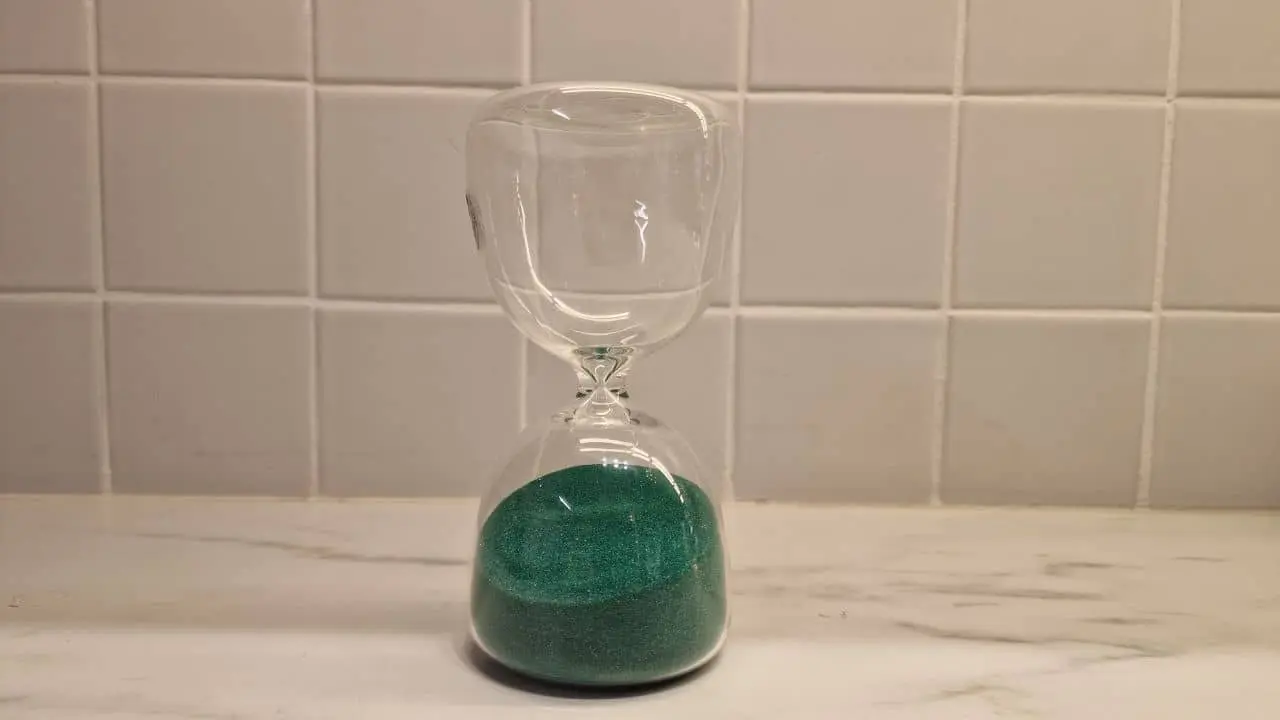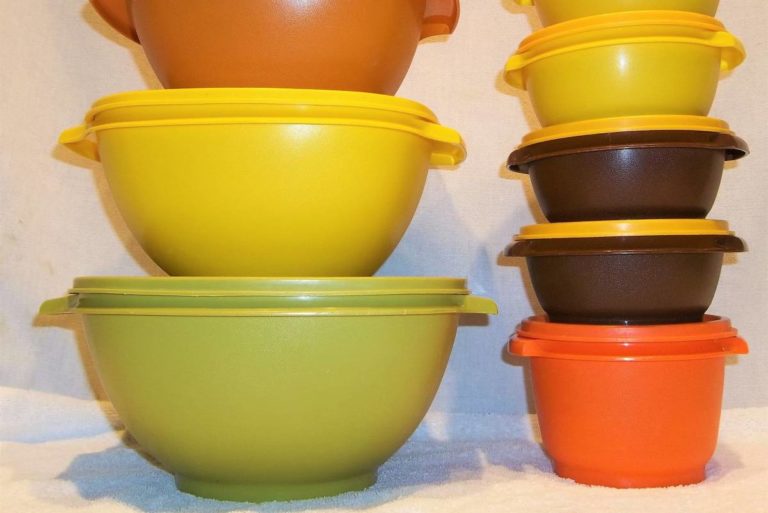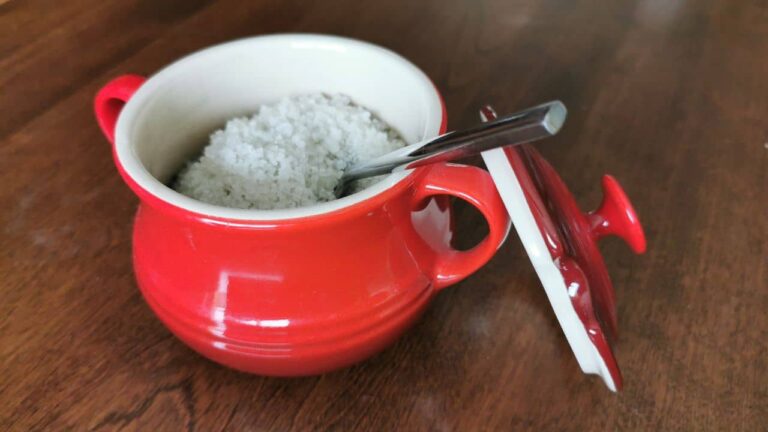How Hourglasses Measure Time (The Intricate Mechanisms Revealed)
Before emerging as the ubiquitous symbol of a process at work on your PC or your favorite app, the hourglass was for centuries the representation of mortality and an icon and tool of science.
Much more than just a symbol, it also made it possible to measure time long before the era of the watch.
But what exactly is an hourglass? How does one work? Where do hourglasses come from, and are real ones still even used? Have you heard of magnetic hourglasses? This article will answer all the questions you might have about these historical timepieces.
Hourglasses: A Fascinating Look at How They Measure Time
Since the Stone Age, humans have developed several systems throughout history:
- Sundials: they work with sunlight and still indicate the time during the day and even the season.
- Water clocks (also called clepsydra): from the Greek klepsudra, meaning “water stealer.” These clocks have a system of graduated containers that measure the flow of water from one container to another.
- Hourglasses: to measure time more precisely with a constant flow and speed.
What are hourglasses?
Just like the earlier sundial and the clepsydra and the more recent clock, the hourglass is a time-measuring device. Unlike a conventional clock that operates in an endless cycle, it can only count one interval of time at a time.
Within any two given intervals, then, you’re forced to flip it over.
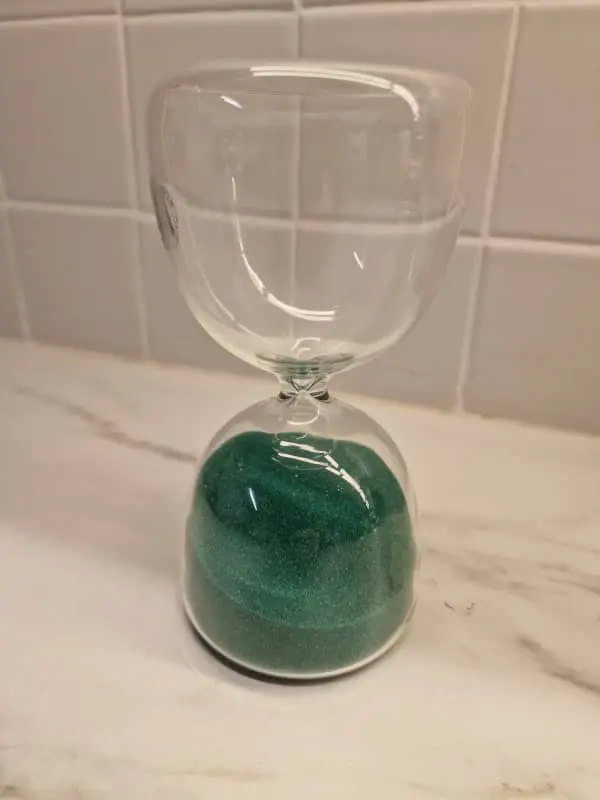
An hourglass or sand clock consists of two glass bulbs connected by a narrow opening that allows the fine sand stored in the top bulb to slowly but steadily pass through it to the bottom bulb.
The duration of an interval corresponds with the duration of the sand flow. This varies according to the size of the bulbs, the width of the opening, and the quantity and dimensions of the grains of sand.
The first hourglasses were invented over 2,000 years ago to time speeches in the ancient Greek Senate. The British used them 150 years ago during tennis tournaments. They were also used on ships where until the 18th century. An hourglass was placed under the supervision of a man whose mission was to turn the hourglass over each time the sand had completely run out in order to measure the time elapsed since the departure from the port.
Did you know?
How does an hourglass work?
Originally, an hourglass consists of two superimposed bulbs that are more or less round at the base and take on a narrower shape as they get closer together.
The connection is made by means of a diaphragm or a fine pipe. The whole is then sealed with a wax seal or the addition of glass.

Then simply place the sand in the upper bubble upwards and let gravity take care of the rest. The sand will flow through the small opening left between the two containers until it runs out.
This method of measuring time is certainly one of the simplest to understand. However, the lack of an automatic cycle means that the hourglass must be turned over manually to count each time interval.
How is a sand hourglass made?
The first step in making an hourglass—usually made of glass— is shaping it while it is extremely hot and malleable. This requires the very precise techniques of the glass industry.
The final product should take the form of two superimposed globes connected by a narrow opening in their middle.
Next comes the design of the protective frame, which can be made up of one or more parts depending on the manufacturer.
The last step is to pour a sufficient amount of fine sand or other particles into the glass according to the desired time interval.
All that’s left is to seal the top of the glass and do some careful checking before the hourglass can go on sale.
Do all hourglasses contain only fine sand?
No, not necessarily. Contrary to this popular belief, sand can be replaced by other substances, provided that they have similar characteristics to certain types of sand.
Sand is the most complex of the hourglass components. Not all types of sand can be used, as the grains may be too angular and become stuck rather than flow steadily through the hourglass’ neck.
The kind of white quartz sand found on sparkling, pristine beaches is attractive, but it’s not the best for making hourglasses, as it is too angular and doesn’t flow well.
Marble dust, other rock dust, and rock flour (powder from cut glass) and round sand grains, such as river sand, are best for hourglasses.
The very first models of sand clocks didn’t contain sand, but mixtures of powdered eggshell, calcined marble, and lead or zinc dust.
Here are the different types of powdered solids used for hourglasses:
- fine well-purified sand
- finely crushed egg shell
- marble dust
- lead dust
- tin dust
Currently, the most common materials are marble and sand dust.
What Advantages and Disadvantages Do Hourglasses Have?
Today, hourglasses are mostly a timeless decorative object to set somewhere on a piece of furniture.
Advantages
In addition to their aesthetic appeal, hourglasses also offer a way to better manage time by dividing it into several periods according to the quantity of sand and the size of the piece. In this sense, it can be very useful for parents who want to instill better time management in their children.
An awareness of the passage of time
What better than an hourglass to awaken our awareness of the passage of time?
Hourglasses give a precious image of time passing quickly without being able to do much. Thus, they promote a better concentration in the realization of tasks over shorter or longer periods.
This makes the hourglass an essential ally in the fight against procrastination.
Hidden psychic virtues
Far from being a simple sand clock, the hourglass has hidden psychic virtues. It makes us think about the importance of spending time with our loved ones, precious moments that may not come back.
Also, watching the flow of fine sand or any other fine particle seems to have relaxing benefits for the mind and body. This makes it a simple solution to reduce stress and insomnia.
Disadvantages
Some hourglasses can be fragile and can break if dropped or mishandled.
Also, they’re not always practical or suitable for all uses and situations, such as measuring very short periods of time or using in extreme (very hot or cold) environments.
Magnetic Hourglasses: The Hourglass of the Contemporary World
In recent years, a new type of hourglass has become increasingly popular: the magnetic hourglass. In this version, traditional fine sand or various powders are replaced by thousands of magnetic grains of iron.
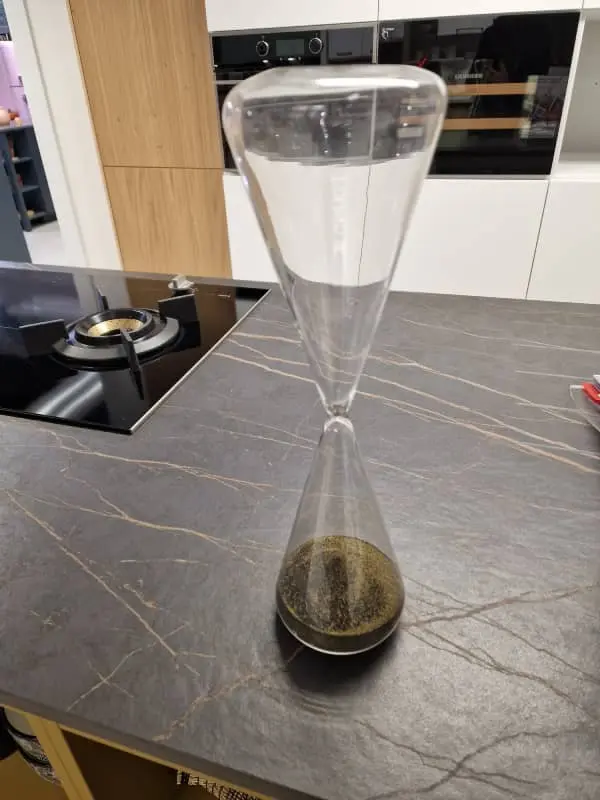
Once these grains fall into the bottom bulb, they stick to the top of the pile to form vertical columns. This creates a magnificent show that makes the hourglass a perfect interior design accessory.
Frequently Asked Questions
Here are the other frequently asked questions about hourglasses. If you don’t find yours, don’t hesitate to send it to me via the contact form.
When was the hourglass invented?
Hourglasses (also known as sandglasses and sand clocks) may have been used by the ancient Greeks and Romans, but history can only document that both cultures had the technology to make glass.
The first claims about hourglasses are attributed to the Greeks in the third century BC. History also suggests that sand clocks were used in the Senate of ancient Rome to time speeches, and, perhaps, to witness the quality of political speeches.
How many grains of sand are in an hourglass?
It is simply not possible to precisely determine the number of grains of sand in an hourglass.
That said, this depends on at least four factors:
- the volume of the bulb
- the volume of sand used
- the shape and type of sand grains or powders used
- the diameter of the hole between the two parts of the hourglass
In addition, sand grains can clump or stick together, which can affect the accuracy of the measurement.
Where can I find colored sand hourglasses for purchase?
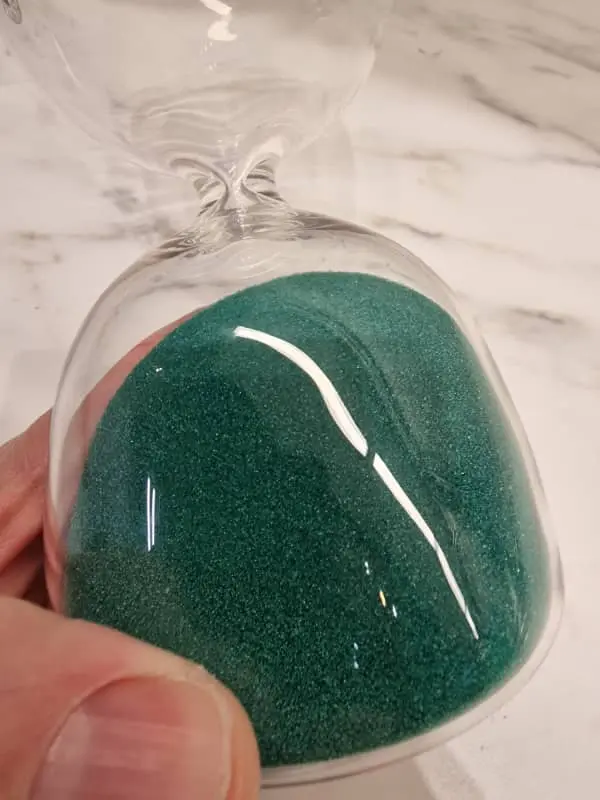
Many sites, including eBay and Amazon, offer hourglasses with colored sand at very reasonable prices.
How do they put sand in an hourglass?
The sand is inserted into the lower bulb through the opening on the upper bulb. Once the sand is inserted, the glass opening is sealed after being heated at a very high temperature.
Watch the process in this video:
Conclusion
Finally, you should know that the majority of the hourglasses currently designed offer a time of flow between 1 and 5 minutes, or 3 minutes on average. This design makes them very useful in the kitchen, especially for cooking boiled eggs and broiling toast.
You can also use them when playing board games. They’re useful for speeding up that player who always takes forever by limiting the time of each player’s turn.
That’s it! I hope this article has helped you learn a little more about hourglasses.
Again, if you have any other questions on the subject, don’t hesitate to share them! I’ll be happy to reply.

